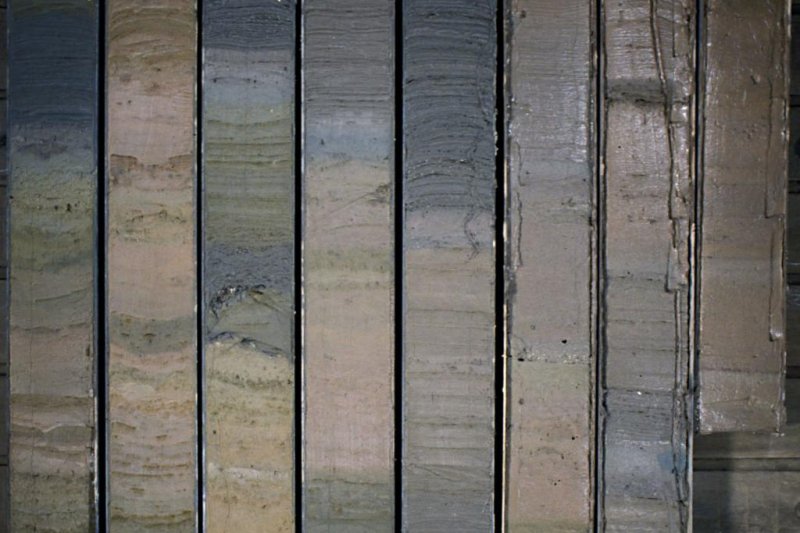Scientists analyzed sediment cores collected from lake beds around the world to measure the influence of human activities on erosion at global scales. Photo by Hannes Grob/
Wikimedia Commons
Oct. 29 (UPI) -- New research suggests human activities resulted in accelerated soil erosion some 4,000 years ago.
At millennial time scales, rock weathering and soil erosion is dictated by the movement of the planet's tectonic plates and changing climate patterns. But across shorter time scales, the local impacts of human activities on erosion can be measured.
For the new study, scientists wanted to determine whether human-influenced erosion can be measured at global scales. To find out, they analyzed the layers of sediment cores collected from 632 lakes from all over the globe.
"Lake sediments are considered natural archives of erosion activities," Jean-Philippe Jenny, scientist at the Max Planck Institute for Biogeochemistry in Germany, said in a news release. "All fluxes and processes removing soil, rock and dissolved materials result in chronological sediment layers that are accumulated and preserved at the bottom of lakes."
Using radiocarbon dating techniques, scientists were able to date the different layers of lake sediment and measure changes in the rate of sediment accumulation.
"This is the first time that by compiling data from so many lakes we see a general trend that shows an increasing sediment accumulation during the Holocene, or the last 10,000 years,'' said Pierre Francus, professor at the National Institute of Scientific Research in France.
By analyzing the pollen fossils trapped in ancient lake sediments, scientists were able to link accelerating erosion rates during the Holocene to land cover changes -- specifically, deforestation.
"We were excited to find that increased sediment accumulation 4,000 years ago coincided with a reduction of arboreal pollen derived from trees," Jenny said. "The tree pollen decrease reflects land-cover changes, in particular land clearances, e.g., for agriculture and settlement, that in turn are likely to lead to soil degradation and erosion.''
Sophisticated statistical analysis confirmed the loss of trees was the primary driver of increased sedimentation in lake beds around the globe -- evidence that human activities were already increasing erosion rates some 4,000 years ago.
When researchers looked at the differences between regional erosion rates, they found patterns corresponding with socioeconomic developments. Soil erosion rates began accelerating in Europe, for example, earlier than in North America. Soil erosion in North America only started to increase after European colonizers had brought new agricultural practices to the continent.
Researchers also found evidence of local sedimentation reductions at times and places linked with the construction of dams by the Roman and Chinese empires.
"Well before the more recent and abrupt influences by greenhouse gas emissions, human activities must have influenced the global environment already 4,000 years ago," Jenny said.
Moving forward, the study's authors expect their findings -- published this week in the journal PNAS -- to be used by scientists making predictions about Earth's carbon cycle.















